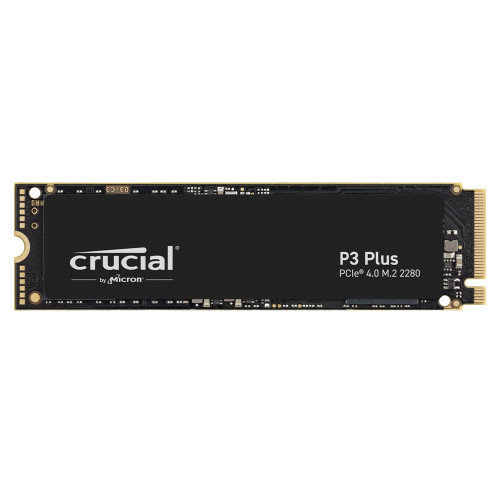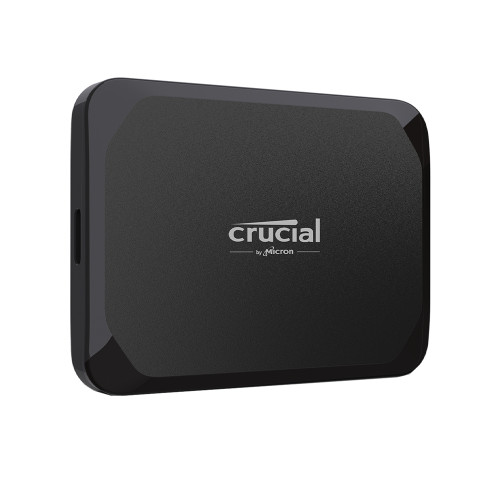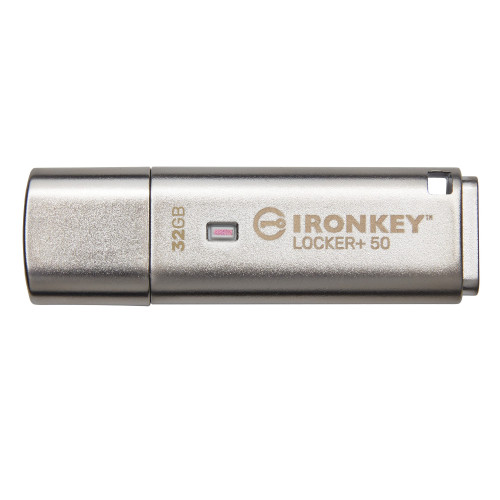POSTED: 27 March, 2025
Best Storage and Organisation Tech for a Digital Declutter
Spring cleaning isn't just for your home—your digital life needs a refresh too! Over time, our devices become cluttered with duplicate files, unused apps, and overflowing storage, which results in slower performance and reduced efficiency. A messy digital space can make it harder to find important documents, back up crucial data, or even enjoy a smooth user experience.
The good news? A little organisation and the right storage solutions can help you take back control. Whether you need cloud storage for easy access, an external hard drive for backups, or a portable SSD for speed and convenience, there's a solution to suit every need. In this guide, we've rounded up the best tech to help you declutter, organise, and optimise your digital space, making life simpler and more efficient.
Why is Digital Decluttering Important?
Just as a filled desk can slow you down, a disorganised digital space can frustrate simple tasks. Think about it—how often do you waste time searching for a lost file, dealing with a sluggish computer, or struggling to free up space on your device? These issues don't just cause frustration; they also impact productivity and increase stress levels.
A well-organised digital space ensures your most important documents, photos, and software are exactly where you need them when you need them. It can also protect your data from loss due to crashes or accidental deletions. By using the best storage solutions, you can:
- Improve device performance: Free up space to speed up your computer and prevent lagging.
- Keep important files safe: Reduce the risk of losing important documents with reliable storage backups.
- Free up space for new projects: Ensure you always have room for new files, updates, and creative work.
- Work more efficiently: Spend less time sorting through digital clutter and more time getting things done.
By taking control of your digital storage, you'll create a more organised and stress-free environment and extend the lifespan of your devices.
Let's explore the best storage options to help you achieve a clean and efficient digital workspace.
Best Storage Solutions for a Digital Declutter
1. External SSDs – Fast, Reliable, and Spacious
An external SSD (solid-state drive) is one of the best storage options for speed and reliability. Unlike traditional hard drives, SSDs have no moving parts, making them faster, more durable, and resistant to physical damage. They are excellent choices for professionals who need to handle large media files, gamers looking for quick load times, and anyone who wants a high-speed backup solution.
One of the biggest advantages of external SSDs is their portability. They are lightweight, compact, and plug-and-play, allowing you to transfer files between devices without hassle. Whether you're editing videos on the go, storing high-resolution photos, or keeping your important documents secure, an external SSD is an excellent choice.
Recommended Product:
Crucial X9 4TB External Portable SSD: A powerful and high-capacity external portable storage designed for speed, efficiency, and portability. Its massive 4TB capacity provides ample space for all your important files, from storing large media files to game libraries and work documents.
It features a USB 3.2 Gen2 Type-C interface, ensuring fast and seamless connectivity with various devices. Boasting read speeds of up to 1,050 MB/s, this SSD delivers rapid data access and transfers, making it ideal for professionals and everyday users. Its sleek black colour and durable design make it a stylish and reliable choice for on-the-go storage.
2. Internal SSDs – Speed Up Your Device
An internal SSD is one of the easiest and most effective upgrades you can make to your computer. If you've ever waited impatiently for your system to boot up or an application to load, an SSD can make a world of difference. Unlike traditional hard drives, which rely on spinning disks, SSDs use flash memory to store data, offering faster performance, less noise, and greater durability.
The speed boost is the biggest benefit of upgrading to an SSD over the traditional hard drive. Your operating system will load in seconds rather than minutes, applications will open almost instantly, and file transfers will be much quicker. This means less waiting around and more getting things done.
Internal SSDs come in two main types:
- SATA SSDs – These are the most common and serve as a direct replacement for older hard drives. They offer a major speed improvement while maintaining compatibility with most computers.
- NVMe SSDs – If you want top-tier performance, NVMe SSDs are the way to go. They connect directly to the motherboard using the PCIe interface, offering blazing-fast speeds for gaming, content creation, and professional workloads.
Recommended Product:
Crucial P3 Plus 4TB NVMe PCIe 4.0 SSD: If you want serious speed, high capacity, and high performance, the Crucial P3 Plus 4TB NVMe SSD is a powerhouse storage upgrade. Built for PCIe 4.0, it delivers lightning-fast read speeds of up to 4800 MB/s and write speeds of up to 4100 MB/s, making it best for gamers, creatives, and professionals who demand top-tier performance.

Designed in the compact M.2 2280 form factor, this SSD is ideal for ultra-thin laptops, gaming rigs, and high-performance desktops. It loads applications faster and reduces system boot times, ensuring a seamless computing experience. With 4TB of storage, you'll have ample space for games, 4K video projects, high-resolution photography, and large software files—all in one sleek, efficient drive.
3. USB Flash Drives – Small but with Big Impact!
Sometimes, you just need something small, fast, and portable to store your ample files—this is where USB flash drives come into play. These little devices may not look like much, but they pack a punch when it comes to quick, convenient storage capacity and compatibility with other devices. Whether you're handing off a presentation to a colleague, backing up holiday photos, or keeping important documents in your pocket, a flash drive makes it simple and hassle-free.
USB Flash Drives have many names. They are also called thumb drives and memory sticks. The following are the main types of USB Flash drives, with each type designed to fit different ports across different devices.
USB Type-A Flash Drives: USB-A flash drives are the most common type of USB flash drive. They are rectangular and have two small squares on each side of the connector. USB-A drives come in a wide range of storage capacities, from as little as 2GB to as much as 256GB. They're great for students, office workers, and anyone who wants quick file transfers on the fly.
USB Type-C Flash Drives: Another type of USB flash drive connector is the USB-C. These flash drives are smaller and have a different connector shape. If you compare them with USB-A, there is one notable difference: the transfer speed. If you want to transfer large files and care about the speed, then USB Type C flash drives will perform better. USB-C flash drives are compatible with different devices, but some older devices cannot be linked to them because they are newer technology.
Lightning Flash Drives: Lighting ports were first introduced for the Apple users. However, due to certain restrictions, Apple has switched to USB-C connectors. Despite this change, many users still use lightning connectors to charge their devices. Lighting USB flash drives are equipped with a lightning connector on one end and either a USB-A or USB-C connector on the other, making it easy to transfer files from your iPhone to other devices.
Micro USB Flash Drives: Micro USB flash drives are built to fit the smaller ports commonly found on older smartphones, tablets, and various portable devices. While many modern devices have transitioned to USB-C, micro-USB flash drives are still helpful for those with devices that support the older port. These drives support USB On-The-Go (OTG), allowing smartphones and tablets to act as hosts so you can easily access and transfer files directly from the flash drive.
Recommended Product:
Kingston IronKey USB 3.2 Flash Drive: A flash drive that takes speed and security seriously. With 256GB of storage, it's perfect for those who need generous space in a small footprint. It features read speeds up to 230 MB/s and write speeds up to 150 MB/s, ensuring you're never stuck waiting for files to move.
Its robust design includes waterproof protection and a vibrant blue finish, making it durable and stylish. This USB flash drive offers speed, security, and convenience for backing up documents, storing personal files, and transferring work between devices.
Find More USB Sticks Here – perfect for quick, on-the-go storage that keeps your files right at your fingertips
4. External Hard Drives – High Capacity, Low Hassle
When you need a lot of space but on a budget, external hard drives are the go-to solution. These storage workhorses offer enormous capacities and can store millions of family photos, extensive video libraries, large databases, and bulk work files.
One of their biggest advantages is cost-effectiveness. You'll get far more gigabytes per pound compared to SSDs. While they may not match the lightning-fast performance of SSDs, modern external hard drives still deliver solid read/write speeds for everyday tasks.
There are two common types:
Desktop External Hard Drives: These are bulkier but offer the highest capacities, often 4TB to 20TB. They are best for permanent setups where portability isn't a priority.
Portable External Hard Drives: Compact and USB-powered are ideal for taking your data on the go. They typically offer up to 5TB of space and fit easily in a backpack or laptop case.
Many models now feature USB 3.0 or USB 3.2 interfaces for faster data transfer; some even come with built-in backup software or encryption tools for added peace of mind. If you need to offload large volumes of data or set up a reliable backup system, an external hard drive is a smart, dependable storage solution.
Want a centralised solution for the whole household or office? A home NAS setup could be the perfect long-term storage solution. With the right NAS and hard drives like WD Red, you can create a central hub for backups, media libraries, and file sharing—accessible anywhere in your network. Read Our Guide to Setting Up a Home NAS with WD Red Drives
Top 5 File Management Tips to Keep Your Files Organised and Secure
The best storage solutions help, but organising your files is just as important. Here are some tips to keep your digital space neat:
1. Store data in a single location
Where do you store your data more often? Storing documents across multiple locations—on a single computer, network server or in the cloud—can quickly become inefficient and disorganised. When data is scattered, you cannot easily locate specific files. A Gartner survey found that 47% of employees struggle to find the information they need to do their jobs effectively. One major cause is data silos—files stored in different, disconnected systems. To improve file management, the first step should be consolidating important documents into a single, well-structured folder with clearly labelled subfolders.
2. Delete and archive old computer files and folders
If you have duplicate files or documents you no longer need, it's best to delete them right away to avoid wasting time organising unnecessary clutter. Start by removing these files before diving into your organisation process. For documents you're unsure about, consider placing them in a folder labelled "Archive"—this way, they're out of sight but still accessible if needed.
To further optimise your storage, consider using a cloud solution like OneDrive, which can automatically offload files from your local drive while keeping them accessible online. This helps free up valuable space on your computer without losing access to important documents.
3. Create a folder hierarchy
Disorganised folder structures can seriously hold you back. When files are stored in random folders or subfolders with no clear connection, locating essential documents—let alone related files becomes difficult. Poor folder organisation makes retrieval time-consuming and leads to record duplication, which undermines data integrity. The ideal and easy management storage strategy will vary based on your organisation's needs. Within your organisation, you can build a hierarchical system of subfolders—organised by username, date, project, or department. Start on your shared drive with the broadest categories for your main folders, then be more specific with subfolders.
4. Use descriptive file names
Are you one of those who randomly name their documents? If so, you may require clicking and opening each file in a particular folder each time you want to see a particular piece of information from the pile. Poor file naming can cost you a lot of time waste because you will probably need to employ trial-and-error tactics to access files. So, ideally, your file names should be detailed enough so that you know exactly what they are at a look. Start with the broadest category—like the year or department—then move to more specific details. If you're organising files by date, your file name structure might be YYYY-MM-DD (year month day), followed by any other details you might need (for example, 2025-03-21 Aiman -fivetech_content calendar). Moreover, if you are organising files by name, project, or department, begin with that and add other relevant search terms (for example, Aiman-fivetech_content- calender_2025).
5. Implement robust security measures
Cybersecurity threats are everywhere—so it's important to build data protection into your digital file organisation strategy.
Start by setting sharing permissions on files and folders to ensure that only the right people- internal team members, clients, or contractors—can access what they need and nothing more. Choose cloud storage services with strong data security and compliance standards. Look for features that give you backup and security over your files, such as:
- Set passwords for sensitive files and folders
- Assign read-only access
- Prevent file downloads
- Apply user-, file-, or group-specific permissions
- Encrypt confidential documents
To stay consistent, establish a transparent system for when and how to use specific sharing settings. Document these guidelines, share them with your team, and make them easily accessible for future reference.
Final Word
Digital clutter creeps up on all of us—one download here, a duplicate file there, and before you know it, your device is calling out under the weight of years of accumulated chaos. But it doesn't have to be that way. If you have the right storage tools and thoughtful organisation, you can turn even the messiest digital space into a well-organised machine.
Whether you need the speed and portability of an external SSD, the sleek performance boost of an internal NVMe drive, the plug-and-play ease of a USB flash drive, or the sheer capacity of an external hard drive, there's the best storage solution for every type of storage need. Each option serves a purpose and has plenty of features.
But remember, it's not just about the storage drives—it's also about how you use them. It is recommended that you clear out what you no longer need, sort what you do, name your files clearly, and always back up your most valuable data. Digital decluttering should be an ongoing habit that pays off in peace of mind, productivity, and device longevity.
Start your digital decluttering journey with the best storage solutions available at Box.co.uk, your go-to destination for smart, secure, and efficient tech. Invest in the best storage solutions, such as external SSDs and USB flash drives, to keep your files safe and easily accessible.
So, why wait any longer? Take the first step toward a cleaner, faster digital life. Explore our top-rated storage solutions now at Box and find the perfect tools to organise, secure, and simplify your digital world.

